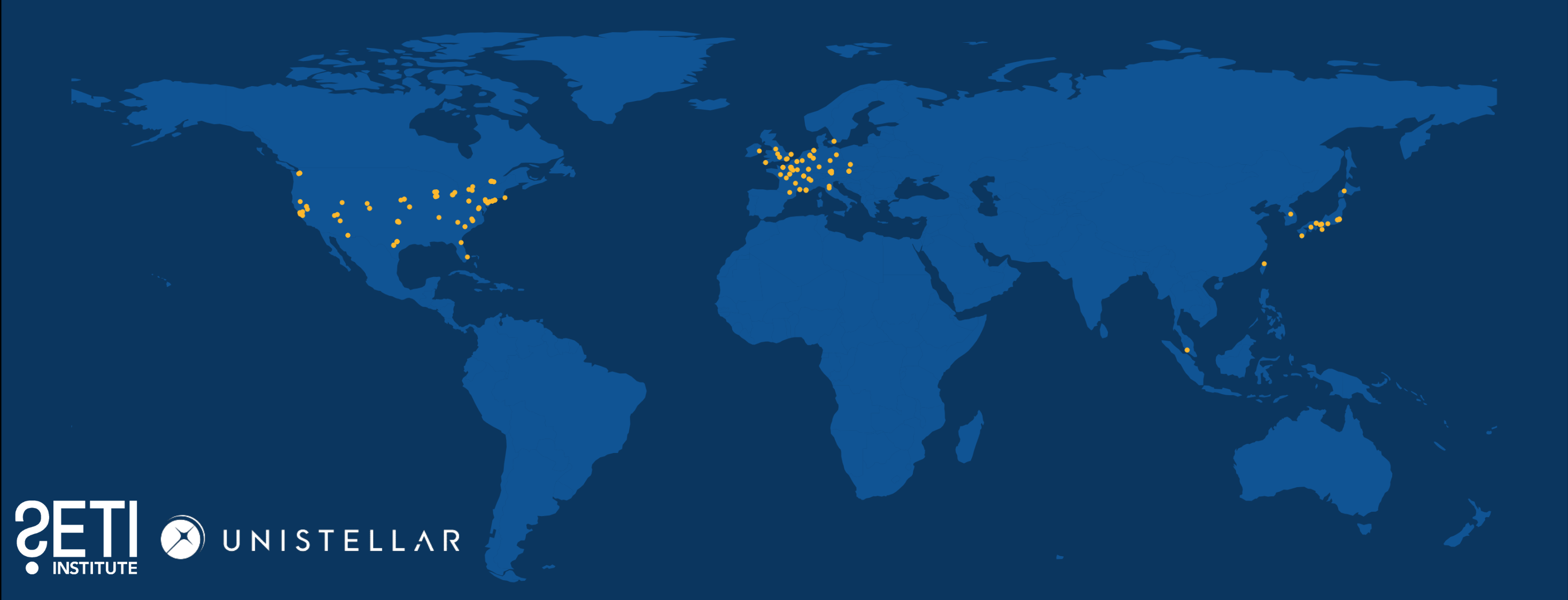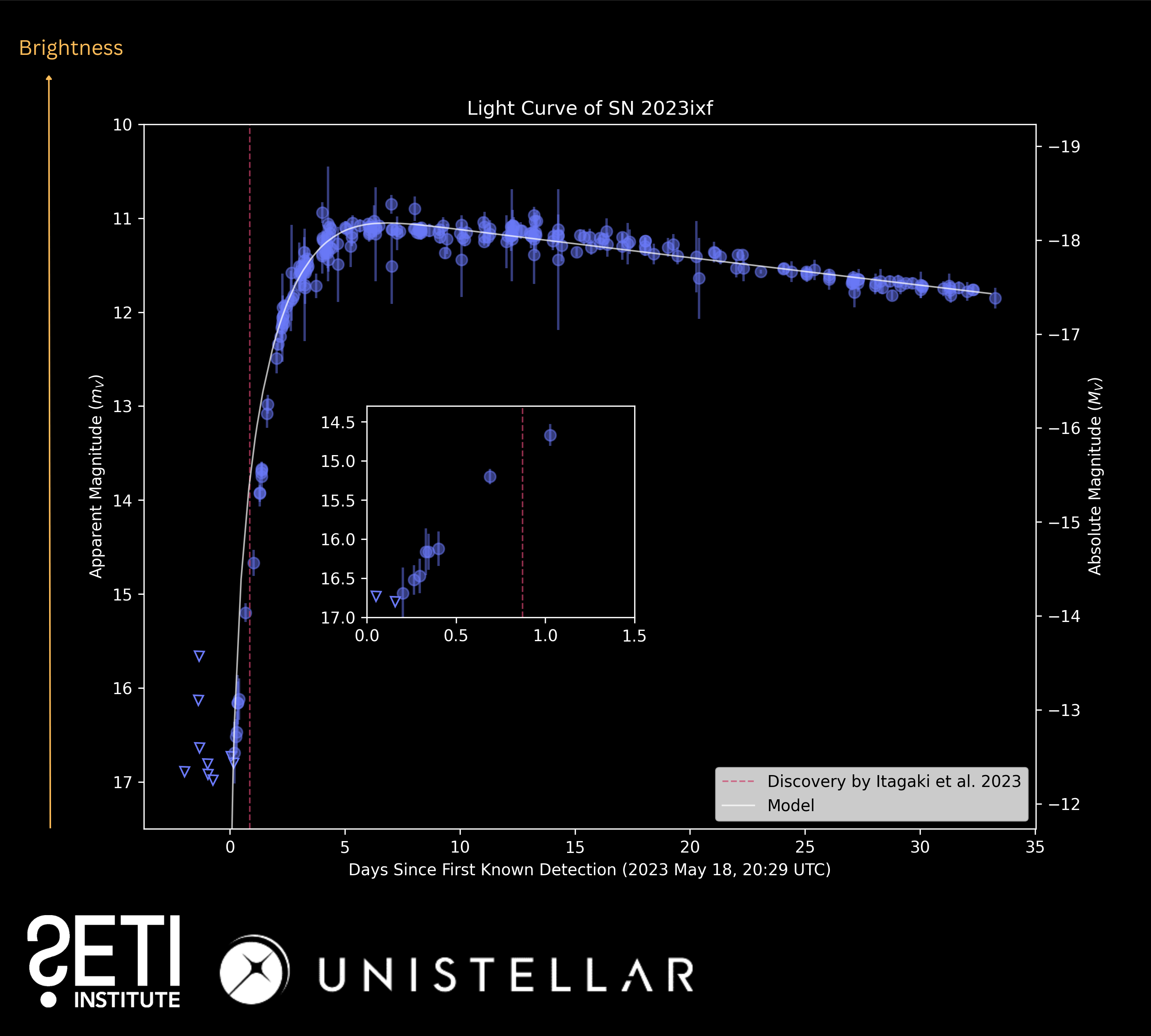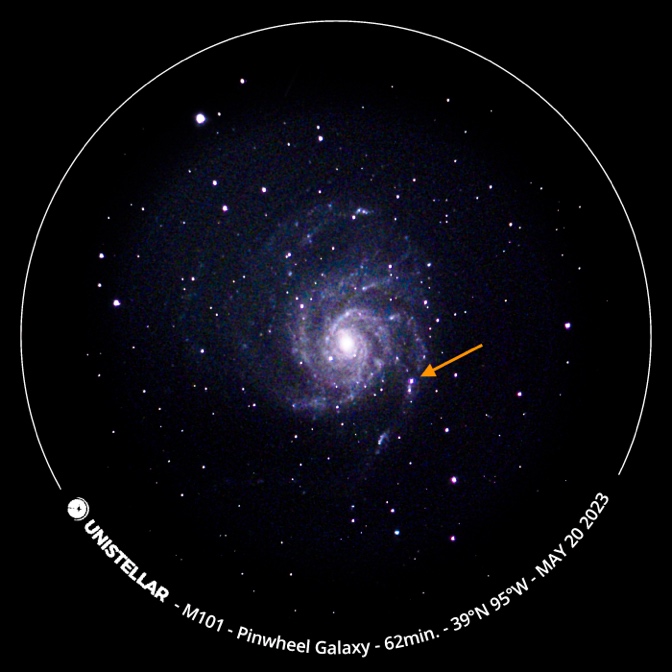
July 11, 2023, Mountain View, CA - In an unprecedented achievement, citizen scientists have set a new record for the SETI Institute and Unistellar, comprising the highest number of observers providing data on a single event. Amateur astronomers participating in the SETI Institute’s and Unistellar’s Cosmic Cataclysms program conducted a groundbreaking observation of supernova (SN) 2023ixf. The observations, which began just one hour after the supernova’s first known appearance, have generated the longest continuous light curve of this supernova gathered by citizen scientists that has been published to date. The data collection effort involved 123 observers and utilized Unistellar’s eVscope, with observations set to continue until the supernova is no longer visible, likely sometime in August. The accomplishment highlights the significant contributions made by citizen scientists in advancing astronomical research.
“It is really incredible what this citizen science network can do,” said Lauren Sgro, who led the study along with Tom Esposito. The two are part of a team of SETI Institute researchers guided by Franck Marchis, a senior astronomer at the SETI Institute and Chief Science Officer and co-founder at Unistellar. “This was the closest supernova of the last decade, and observers took full advantage of the special occasion. They jumped on target as soon as possible and kept observing, which allowed us to witness the full potential of this program.”

The research note, published in Research Notes of the American Astronomical Society, revealed that for 35 days, 252 observations from 115 telescopes captured the supernova’s escalating brightness, followed by its gradual decline. This extensive dataset provides valuable insights into the behavior of this supernova, thanks to the collaborative efforts of dedicated amateur astronomers.


by Unistellar observer Michael Cunningham.
SN 2023ixf is shown by the orange arrow.
View full image here.
The supernova (SN) 2023ixf occurred in the Pinwheel Galaxy, a spiral galaxy located approximately 21 million light-years from Earth. This explosive event was first discovered on May 19, 2023 by Japanese amateur astronomer Koichi Itagaki, although others’ observations show that it first appeared on May 18. Astronomers believe that the explosion likely led to the formation of a neutron star, marking the final evolutionary stage of the star that went supernova.
The citizen science campaign is part of the Cosmic Cataclysms science program, jointly undertaken by the SETI Institute and Unistellar. Funded by the Richard Lounsbery Foundation and the Gordon and Betty Moore Foundation, this program allows citizen astronomers to participate in studying cataclysmic events such as supernovae and gamma-ray bursts. By leveraging a newly developed alerts system, the program enables observers to receive real-time notifications when objects of interest are detected, ensuring swift initiation of observation campaigns. Analyzing the increase in brightness and subsequent fading of cataclysmic events, citizen astronomers assist researchers in unraveling crucial details about the progenitor object and the surrounding interstellar material.
Looking ahead, the Unistellar network of citizen astronomers will continue their endeavors by collaborating with other teams to investigate similar transient events when the Vera C. Rubin Observatory in Chile commences operations next year. By combining the efforts of professional and citizen scientists, the study of cosmic cataclysms reaches new heights, expanding our understanding of the universe’s extraordinary phenomena.
The full research note is here: https://iopscience.iop.org/article/10.3847/2515-5172/ace41f
About the SETI Institute
Founded in 1984, the SETI Institute is a non-profit, multi-disciplinary research and education organization whose mission is to lead humanity’s quest to understand the origins and prevalence of life and intelligence in the Universe and to share that knowledge with the world. Its research encompasses the physical and biological sciences and leverages expertise in data analytics, machine learning and advanced signal detection technologies. The SETI Institute is a distinguished research partner for industry, academia and government agencies, including NASA and NSF.
Contact information
Rebecca McDonald
Director of Communications
SETI Institute
rmcdonald@seti.org





